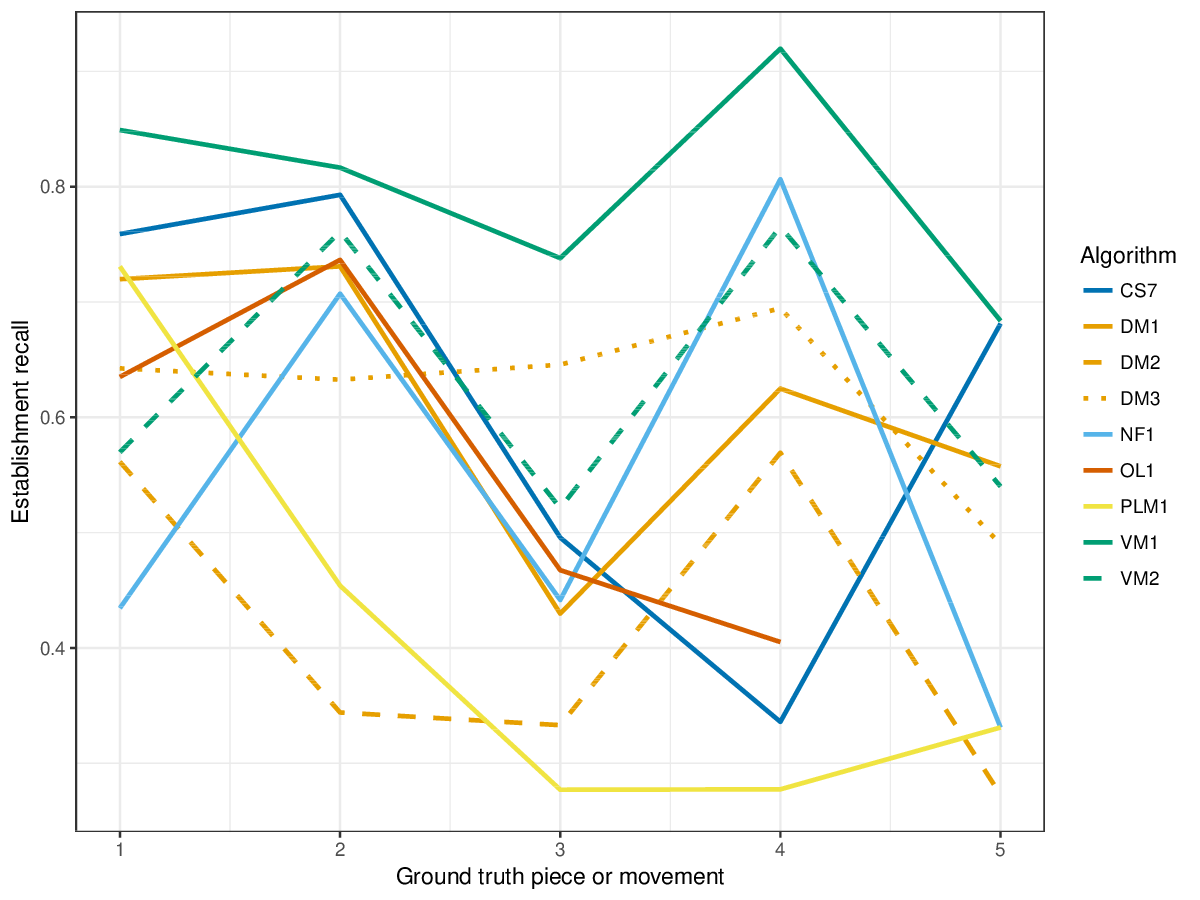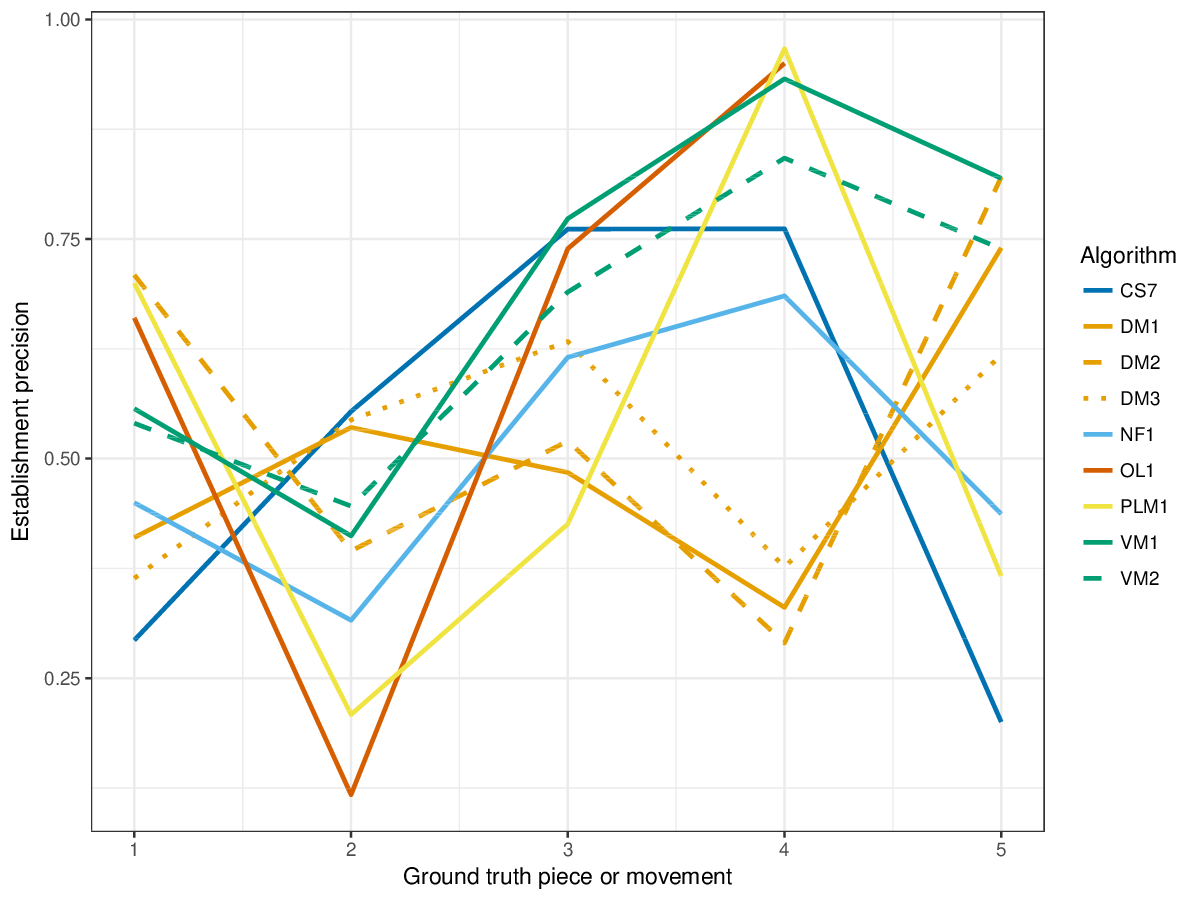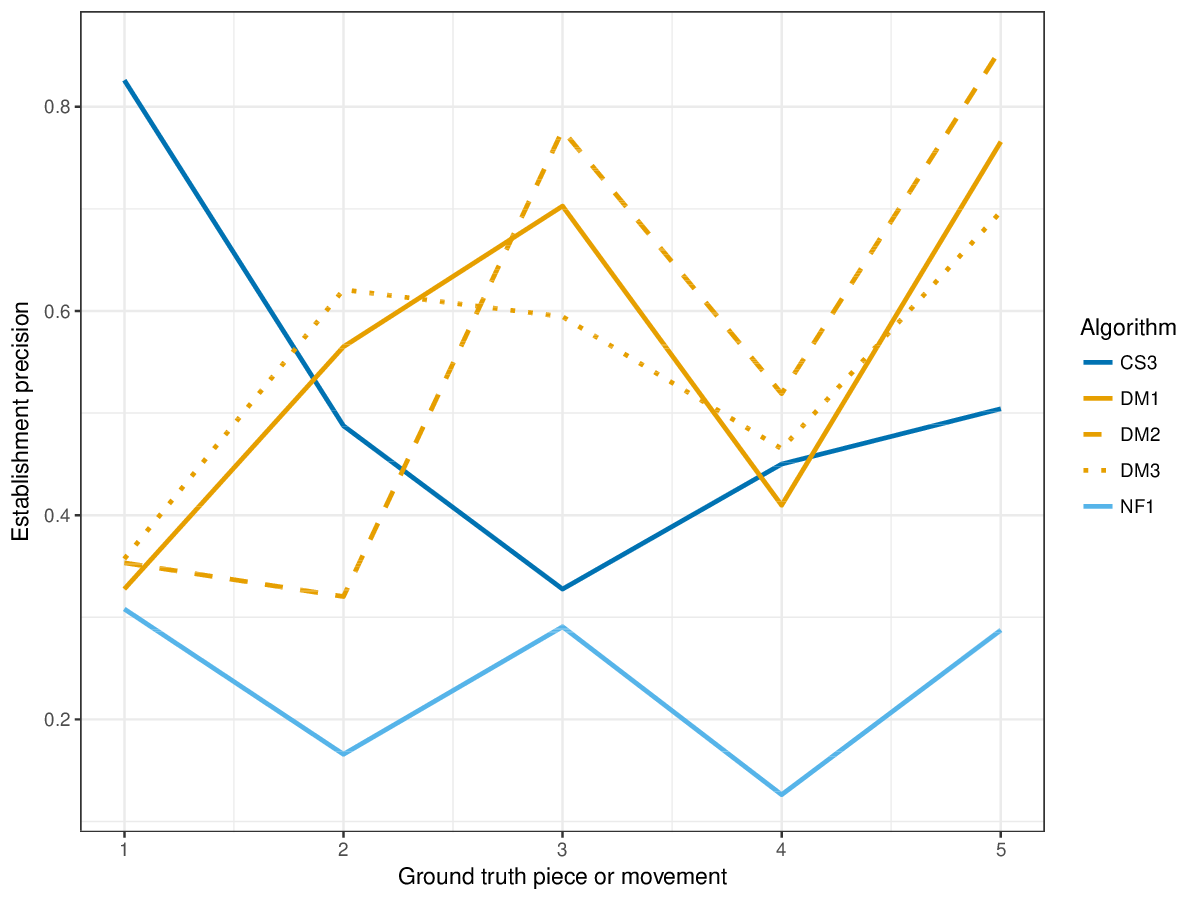Difference between revisions of "2018:Patterns for Prediction Results"
Tom Collins (talk | contribs) m (→Training and Test Datasets) |
Tom Collins (talk | contribs) m (→Datasets and Algorithms) |
||
| Line 13: | Line 13: | ||
== Datasets and Algorithms == | == Datasets and Algorithms == | ||
| − | ... | + | The training datasets were... |
| − | There were no submissions to the audMono or audPoly variants of the task this year. | + | Submissions to the symMono and symPoly variants of the task are listed in Table 1. There were no submissions to the audMono or audPoly variants of the task this year. The task captains prepared a first-order Markov model (MM) over a state space of measure beat and key-centralized MIDI note number. This enabled evaluation of the implicit subtask, and can also serve as a point of comparison for the explicit task. It should be noted, however, that this model had access to the full song/piece – not just the prime – so it is at an advantage compared to EN1 and FC1 in the explicit task. |
| Line 38: | Line 38: | ||
|- | |- | ||
! MM | ! MM | ||
| − | | Markov model || style="text-align: center;" | N/A || | + | | Markov model || style="text-align: center;" | N/A || For purposes of comparison |
|- | |- | ||
|- style="background: green;" | |- style="background: green;" | ||
| Line 50: | Line 50: | ||
|- | |- | ||
! MM | ! MM | ||
| − | | Markov model || style="text-align: center;" | N/A || | + | | Markov model || style="text-align: center;" | N/A || For purposes of comparison |
|- | |- | ||
|} | |} | ||
'''Table 1.''' Algorithms submitted to Patterns for Prediction 2018. | '''Table 1.''' Algorithms submitted to Patterns for Prediction 2018. | ||
| + | |||
| + | '''(DESCRIBE SUBMISSIONS EN1 AND FC1 BRIEFLY HERE.)''' | ||
== Results == | == Results == | ||
Revision as of 08:27, 18 September 2018
Contents
Introduction
THIS PAGE IS UNDER CONSTRUCTION!
The task: ...
Contribution
...
For a more detailed introduction to the task, please see 2018:Patterns for Prediction.
Datasets and Algorithms
The training datasets were...
Submissions to the symMono and symPoly variants of the task are listed in Table 1. There were no submissions to the audMono or audPoly variants of the task this year. The task captains prepared a first-order Markov model (MM) over a state space of measure beat and key-centralized MIDI note number. This enabled evaluation of the implicit subtask, and can also serve as a point of comparison for the explicit task. It should be noted, however, that this model had access to the full song/piece – not just the prime – so it is at an advantage compared to EN1 and FC1 in the explicit task.
| Sub code | Submission name | Abstract | Contributors |
|---|---|---|---|
| Task Version | symMono | ||
| EN1 | Algo name here | Eric Nichols | |
| FC1 | Algo name here | Florian Colombo | |
| MM | Markov model | N/A | For purposes of comparison |
| Task Version | symPoly | ||
| FC1 | Algo name here | Florian Colombo | |
| MM | Markov model | N/A | For purposes of comparison |
Table 1. Algorithms submitted to Patterns for Prediction 2018.
(DESCRIBE SUBMISSIONS EN1 AND FC1 BRIEFLY HERE.)
Results
An intro spiel here...
(For mathematical definitions of the various metrics, please see 2018:Patterns_for_Prediction#Evaluation_Procedure.)
SymMono
Here are some results (cf. Figures 1-3), and some interpretation. Don't forget these as well (Figures 4-6), showing something.
Remarks on runtime appropriate here too.
SymPoly
And so on.
Discussion
...
Berit Janssen, Iris Ren, Tom Collins.
Figures
SymMono
Figure 1. Establishment recall averaged over each piece/movement. Establishment recall answers the following question. On average, how similar is the most similar algorithm-output pattern to a ground-truth pattern prototype?
Figure 2. Establishment precision averaged over each piece/movement. Establishment precision answers the following question. On average, how similar is the most similar ground-truth pattern prototype to an algorithm-output pattern?
SymPoly
Figure 12. Establishment recall averaged over each piece/movement. Establishment recall answers the following question. On average, how similar is the most similar algorithm-output pattern to a ground-truth pattern prototype?
Figure 13. Establishment precision averaged over each piece/movement. Establishment precision answers the following question. On average, how similar is the most similar ground-truth pattern prototype to an algorithm-output pattern?
Tables
SymMono
Click to download SymMono pattern retrieval results table
Click to download SymMono compression results table



